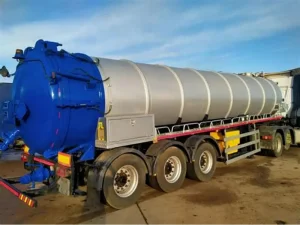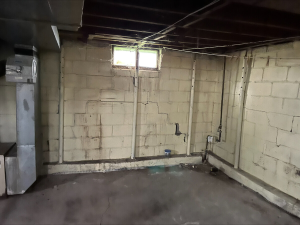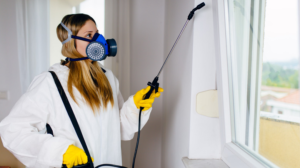There is a good chance that many of your favorite memories with family and friends involve a swimming pool. A well-maintained pool is a beautiful feature of any backyard, but it requires careful attention and regular maintenance.

Look for a contractor with a proven track record of building pools only. Ask for names and phone numbers of previous customers and call them to learn more about their experiences. Contact The Woodlands Pool Company for professional help.
The cost of a pool can vary significantly depending on several factors, including size, materials, add-ons, and location-specific considerations. Choosing the right pool for your lifestyle and budget will allow you to experience the full benefits of this backyard retreat while maintaining the value of your home. This guide will help you understand the primary costs associated with a new pool, so you can plan accordingly.
Construction Costs
The most significant expense for any new pool will be the initial construction phase. During this time, the majority of your budget will be dedicated to labor and materials. Depending on your geographic location, these costs may be higher or lower than the national average.
Concrete pools are typically more expensive than fiberglass or vinyl-lined options because they require extensive excavation and a lengthy building process. However, their durability and aesthetic appeal make them a great investment for those looking to get the most out of their pool.
If you are planning a large backyard pool, expect to spend at least $100,000 for the construction alone. This price tag includes everything from excavation to crane and equipment rental fees. Similarly, a smaller backyard pool can be more affordable than a larger option because it will require less excavation and construction materials.
Other significant expenses include professional cleaning services, which can range from $60 to $90 per hour. Annual maintenance can also run from $250 to $1,800, depending on the type of pool and its features.
Adding a water slide or other fun features to your pool will also increase the overall cost. This will depend on the size and complexity of the feature, as well as how frequently it is used. You should consider hiring a pool company that offers flexible pricing and payment options to fit your budget.
Lighting is another significant addition to your pool that will enhance its appearance and allow you to extend your use of the pool into the night. The most basic LED systems start at around $1,500, while more advanced setups with a variety of colors and customization options can go up to $5,000.
Time
Depending on the size and complexity of your pool, it can take anywhere from a few days to a week to complete construction. During the first step, your pool company will work with you to design and layout your new pool. This process usually takes a few weeks and may require back-and-forth revisions. Once the layout is finalized, your company can begin securing necessary permits for your project.
After the required permits have been secured, the excavation process begins. This can take a few days to a week, depending on your site’s accessibility and soil conditions. Once the excavated pool area is complete, plumbing lines are installed. Then, the pool wall and collar are assembled. This step typically takes one day. Finally, the remaining dirt is backfilled and rough graded around the pool structure.
Experience
A pool is a major investment, and you want to work with professionals who are licensed and have a track record of quality workmanship. Ask for references from previous clients and contact them to discuss their experience. You should also make sure that the contractor is insured and has a permit to operate in your area. You want to avoid being taken advantage of by a fly-by-night builder who doesn’t have the proper insurance coverage and leaves your project incomplete.
Becoming a professional swimming pool contractor requires extensive training and adherence to strict standards. Besides the required education and certification, they also need to complete a series of courses that cover pool design, construction, codes, and safety protocols. Then, they must pass a rigorous exam regulated by the PHTA to obtain a CBP certificate. Having this certificate indicates that the pool builders you hire will have the necessary skills and expertise to deliver your dream pool.
Another sign of professionalism is a company’s commitment to ongoing support and maintenance services. This means that they will help you take care of your pool and ensure it continues to function well for years to come. In addition, they will offer warranties on their workmanship and stand behind their work.
Choosing an experienced pool builder will save you money and time in the long run. An experienced contractor will have a better understanding of your property’s unique conditions and your lifestyle goals, which will help them design a custom pool that fits your needs. They will also be able to identify potential issues and address them promptly.
A qualified pool builder should be able to provide you with an accurate timeline for the completion of your project. In addition, they should be willing to explain the factors that may affect the construction schedule and any potential delays. They should also be able to handle the required paperwork for pool construction, including obtaining permits. Additionally, they should provide a detailed breakdown of all costs involved in the project, as well as any potential additional fees. It is important to know the expected timeline so you can plan accordingly.
Reputation
Reputation is one of the most important factors to consider when choosing a pool builder. Checking online reviews and asking for references are both good ways to gauge a builder’s reliability and quality of work. These steps will help you find a pool company that meets your expectations and will ensure your pool project goes smoothly.
In addition to checking a pool company’s reputation, you should also make sure they are licensed and insured. Pool construction is a dangerous job, and any contractor who does not carry insurance could face legal issues. You can verify a pool company’s licensing and insurance by asking for proof of their credentials. If you are not satisfied with their response, look for another company.
An experienced pool builder will be able to provide you with a detailed quotation that outlines all the expected costs of your pool project. This will help you understand the breakdown of your budget and avoid any surprises down the road. Reputable pool builders will also maintain clear and consistent communication throughout the project.
When looking for a pool builder, consider how long they have been in business and how many pools they’ve built. They should also be able to demonstrate a proven track record of quality work and customer service. Additionally, you should ask the pool builder about their experience working with certain styles of pools. For example, infinity pools require special skills and expertise to install.
Finally, a reliable pool builder will be able to offer a comprehensive warranty and follow-up services for your swimming pool. These services will help you keep your pool in top condition for as long as possible, which can save you money in the long run.
A pool renovation is a big investment, and you want to be sure that you choose the right pool builder for your needs. The best way to do this is by checking online reviews and testimonials, asking for references, and requesting a portfolio of past projects. This will give you a sense of the pool builder’s capabilities and style and help you make an informed decision.








